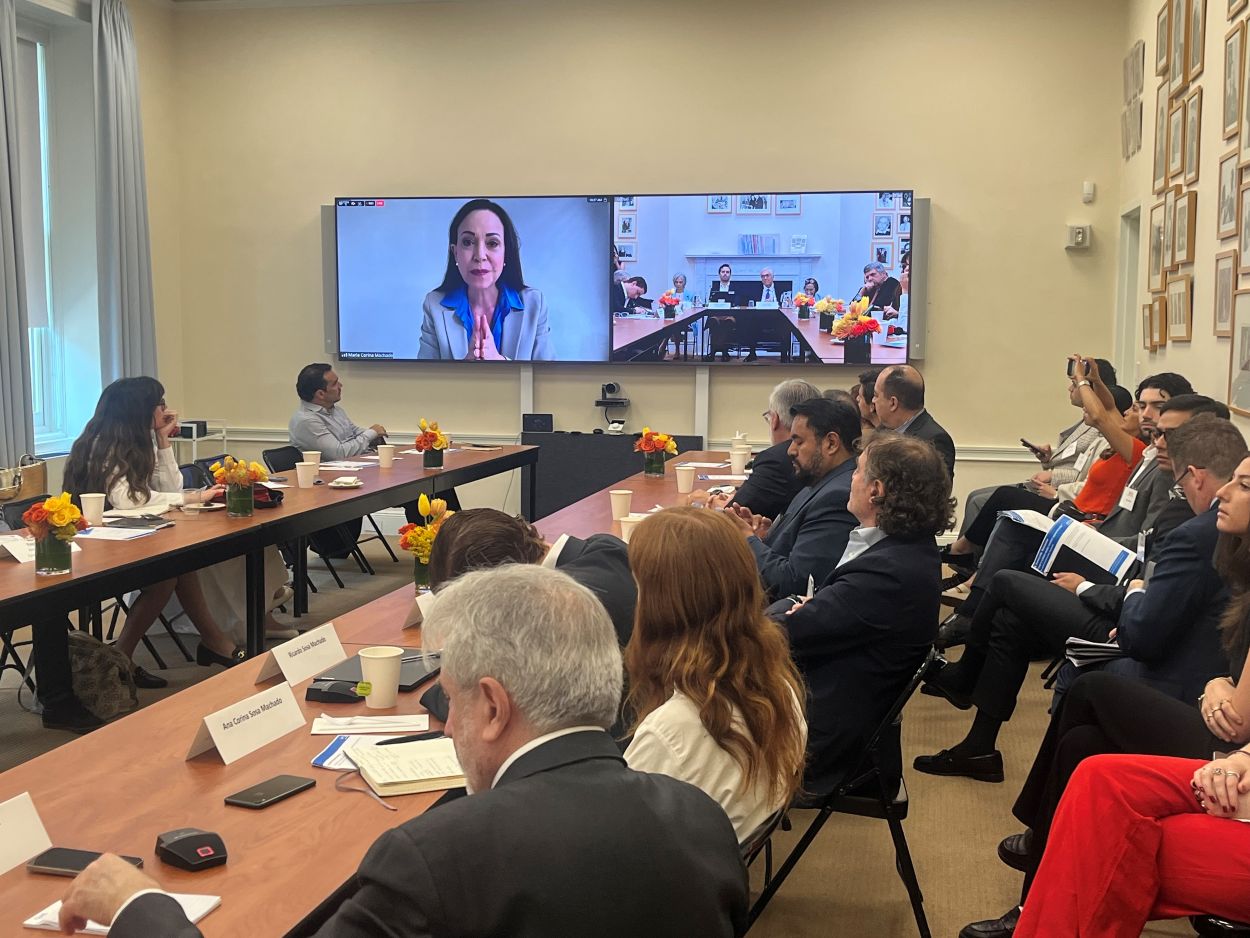Commodities and Growth in the Americas
Commodities and Growth in the Americas
COA hosted a discussion with the World Bank's Pamela Cox about the role of commodities in the region’s economic profile and future. Read a summary of the program.
Introduction
The Council of the Americas hosted a discussion with Pamela Cox, vice president for Latin America and the Caribbean at the World Bank about the role of commodities in the region’s economic profile and future. The program also highlighted discussions she attended at the recent Summit of the Americas focused on possible solutions to the global downturn and ways to promote renewed growth in the Americas.
Commodity Prices and the Global Economic Crisis
Cox began the discussion by emphasizing Latin America’s heavy reliance on commodities. Over 90 percent of the population depends on commodities in some form and a number of commodity exports are suffering as a result of the decline in prices. At the same time, commodities exporters have been able to use the increased revenue to bolster their budgets, invest in social welfare programs, and develop infrastructure. The impact of fluctuation on commodities prices must be investigated on a country-by-country basis. One size does not fit all in the aggregate. Cox explained that a 5 percent rise in commodity prices in one quarter tends to lead to a 0.3 percent rise in GDP two quarters later. In the commodities boom prior to the global recession, commodity prices rose over 20 percent in Latin America, allowing for a major revenue increase and an average growth rate of 5.3 percent, half of which was due to the price boost.
In the past, some analysts claimed steady international demand for Latin American commodities created a strong economic foundation that “decoupled” the region from the financial collapse in the United States. However, Cox argued that it did not allow Latin America to “decouple” from the global economy. In June 2008 Latin American economies began to suffer from the decline in international. Since then, revenue from commodity exports has fallen 50 percent, negatively affecting revenue, employment, exports, and GDP throughout the region.
Cox argued that, prior to the global downturn, some Latin American coutries had taken steps to institute “sensible” economic policies that have helped them wisely manage the increased revenue and withstand the subsequent downturn more effectively. Chile, Peru, and Colombia implemented macroeconomic strategies that took advantage of the increased profits, strengthening reserves and reducing debts during its good years. Brazil currently holds over $200 million in reserves, Cox pointed out. She highlighted Venezuela, Bolivia, and Ecuador as nations that have based large pro-cyclical social spending programs on high commodity prices and are now subject to the market’s volatile fluctuations. Nations such as Panama and Brazil that have been able to diversify their commodity exports to include intermediate goods are in a better position to weather the economic storm than those fueled mainly by energy, she argued. It doesn’t matter whether you have commodities, but how you use them, knocking down the so-called resource curse.
Recovering and Rebuilding with Commodities
The most important tool to boost commodity prices in Latin America is to stimulate growth and demand across the world, especially in the United States, Europe, and China over at least the medium term. An increase in commodity prices is essential to economic recovery in Latin America. Copper has already risen 80 percent since the beginning of the year as a result of renewed Asian demand, Cox pointed out. “The potential is there, but there must be a demand,” she explained. When growth slows in the United States, the demand in commodities from Latin America also shrinks. As a result, the United States must steer clear of protectionist measures and work to keep markets open within the hemisphere. Strong Asian growth and trans-Pacific trade will also be imperative to stabilize and increase commodity prices. Trade is essential to help Latin America, she said, “As it grows its way out.”
The global recession presents an opportunity to create institutional growth and increased capacity to utilize commodity revenue. Cox highlighted Chile’s successful “Copper Stabilization Fund” to efficiently manage profits from natural resources. The declining commodity prices allow Latin American economies the chance to evolve and diversify exports, Cox said. She stressed that Brazil only began to export soybeans in the 1970s and now has become one the world’s main producers.
COA Vice-President Eric Farnsworth outlined potential sectors that could prove to be “engines of growth” and help to rebuild the economies within the region. Cox highlighted the potential for foreign investment and growth in intermediate goods, energy, and cars. “The world is a lot more interconnected than it used to be,” she said.
Summit of the Americas: Prospects for Economic Partnerships
Cox expressed her optimism about an economic recovery in the wake of the Summit of the Americas in Trinidad and Tobago, which she attended. The summit provided a dialogue for the 34 democratically elected leaders to address climate change, the financial crisis and, social welfare. “It’s time to reengage,” she said, citing the importance of creating constructive relationships within the hemisphere, not only between the United States and Latin America, but among Latin American nations as well. The summit largely focused on promoting “human development,” she explained. Leaders discussed building partnerships to advance education, healthcare, youth programs, and “social safety nets,” while building a skilled workforce and improving personal security.
Cox also cited climate change and energy security as possibilities for collaboration. Brazil and the United States have already partnered to develop the ethanol sector, she pointed out. She discussed the possibility of developing an interconnected electric grid within the hemisphere to advance energy security and green technologies.
Pollution caused by industrialization has also shown to have negative economic effects in Latin America, Cox explained. Even if all developed nations reduce their carbon emissions to zero, developing nations still must contribute too, she said. The World Bank has been working against climate change and environmental degradation through the creation of Climate Clean Investment Funds. Mexico is among the first to receive funds in an effort to clean the air in its capital. The summit produced a consensus that policies promoting clean energy are not just that of the United States, but a hemispheric responsibility, Cox emphasized.








